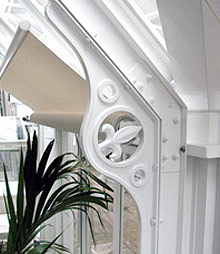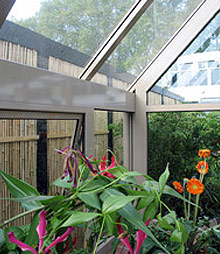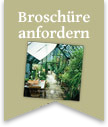Why a HARTLEY?
I recently read, on a BBC webpage, that "Victorian society was transformed by engineering ingenuity and entrepreneurial prowess".
When we think of the great British engineering pioneers, we often think of Isambard Kingdom Brunel who, in July 1839, laid the keel in Bristol for a 3,270 ton iron super ship. Designed for speed and comfort, this was to be the most revolutionary steamship of the early Victorian period and by no means a small task!
We might also think of the famous Sir Joseph Paxton who in 1851 designed the Crystal Palace, constructed in glass and cast iron for the Great Exhibition in Hyde Park.
Perhaps less famous by name, but not by contribution, were Richard Turner and Decimus Burton who in 1848 built the Palm House at Kew a most recognisable building, which has gained the iconic status as the world's most important surviving Victorian glass and iron structure. The technology was borrowed from shipbuilding and it can be seen that the design is essentially an upturned hull. The unprecedented use of light but strong wrought iron 'ship's beams' made the great open span possible, allowing room for the unhindered growth of tall specimen palms.
In the realm of historical horticultural engineering, architecture and design, we may recall other names such as Lancelot “Capability” Brown, Thomas Messenger, Foster & Pearson, W. Richardson & Co, J C Loudon, John Kibble and Boucher & Cousland who all made a variety of historical contributions.
In the 20th Century, Vincent Hartley (1904-1964) and later Eric Bradbury of Clear Span, both flamboyant inventors, “re-invented the wheel” by designing revolutionary glazing systems for residential and commercial greenhouses. But there, at its heart, remained the over-engineering values that the bygones had used and relied upon when shipbuilding and bridge building.
These principles are still. very much in evidence in Hartley greenhouses today.
Points to remember about our engineering
- No Diagonal "Cross Bracing", in elevations or roofs.
- Introduction of riveted mechanical joint details
- Introduction of welding techniques (Spot and Tig Welding)
- No glazing clips
- No putty to hold the glass captive in a frame
- No overlapping glass
- No glass to glass contact
- No glass to metal contact
With the passage of time and technology, other improvements were made, such as use of marine quality stainless steel fixings, thermo plastic rubber to edge and separate the glass from metal and toughened safely glass for glazing. In fact Hartley Botanic was the first company in the United Kingdom to introduce toughened safely glass as an industry standard in all their greenhouses.
God Is In The Detail.
We design and manufacture our greenhouses in either one of the two main systems of mechanical engineering:
1. Structural Expression Engineering:
The original Hartley and Victorian range system.
In the words of Michael Hawarny*, Master of Architecture: “It has been said that great architecture makes a statement. While some statements are open for debate, the basic premise of a building making a valid statement rings true for all good designers. With this initial design criterion in mind, a designer must go beyond the initial requirements and provide a building that is capable of exceeding every requirement requested of it. Structural Expression is one aspect of architecture that has been used throughout history as an inspiration for many of the greatest architectural works. From the Gothic arch to the space frame, many significant examples show the forces at work in a building in a very real and tectonic way. It is this Structural Expression, coupled with the skin of a building, where a building takes its form.
Something as simple as the bolts can also be a means to express the reality of the building. It is then through these details that architecture is made.
The phrase “God is in the details” takes on a literal tone as well as making a statement that emphasizes the importance of thorough design.”
In a traditional Hartley construction, some of the structural nuts, bolts and rivets that are Hartley’s engineering signature are visible and so the full details of the engineering can be appreciated. In the words of a recent customer: "I like to see what my money is buying for me"!
2. Concealed Engineering:
The Botanic Glasshouse range
This is a brilliant fusion of Expression Engineering, as detailed above, with a contemporary feel to conceal the mechanical fixing details. Naturally, this system is more material and labour intensive, both during manufacturing and onsite and, as such, the costs are higher. But it creates beautiful clean lines, joints, and wider panes of glass, for those who prefer a more modern look.
It's a matter of personal preference.
To make your choice easier we have created a range of models to suit most gardens sizes and needs, but all our greenhouses, from the smallest to the largest, are made to order specifically for you.
What Would You Expect?
The true sign of our Company’s engineering strength, and what we feel our customers rely upon, is not just the ability to manufacture robust and long lasting 6'X8' or even 10'X20' glasshouse, but also engineering abilities that can be inspected and measured by the massive horticultural structures that have been in existence for decades.
Of these, Hartley Botanic has produced more than just a few examples:
- The Oxford Botanic Gardens
- The Glasgow Botanic Gardens
- National Trust, Overbecks
- The RHS Alpine House, Harlow Carr
- The Winter Gardens at Duthie Park, Abeerdeen
- Orchid House at the RHS Wisely
- Bonsai House at the Royal Botanic Gardens Kew
- The Nurseries and the Vine House at Hampton Court Palace
- Lakeland Horticultural Society
- Leeds University
- York University
- The Lawns for Lincoln City Council
- The Nurseries at Heaton Park, Manchester
- Woburn Abbey Safari Park
- The North of England Zoological Society
- The Welsh Plant Breeding station
- Departments of Agriculture
- Syon Park
You can have the peace of mind that the same quality of engineering and specification goes into even the smallest of our greenhouses.
What do we recommend if you are new to Hartley?
As consumers (and especially in the current financial climate), we want to ensure that we make the best possible choices that we can. Many a time in the past we might have said to ourselves:
- I would never have done it if I known what I know now
- I wish I had been told the truth
- What a mistake!!
- This is not what I was led to believe
- I wish I had looked into the deeper details
- I should never have been so trusting
- I feel really let down
- I expected a much better service
- I wish I could turn the clock back
- I wish they had kept their promise
Our recommendation to you is to “do your own research”. After all, this is a very considered purchase. In addition to Hartley Botanic there are a few companies that you might come across who make aluminium greenhouses: Country Greenhouses, Alitex, Cambridge Glasshouses, Griffin Glasshouses to name a few.
View and Inspect "In Detail" several similar or larger size Greenhouses as the type you have in mind
- Visit the factories
- Inspect the "below the surface" detail
- Talk to their employees
- Seek historical verification
- Visit their greenhouse examples that were built 10, 20, 30, 40, 50 and 60 years ago which are still in use
- Compare "Like For Like" details of mechanical joints, roof glazing specification, gauge of materials used, etc
- Compare Value
And, as for Hartley Botanic, you are always welcome to visit our factory.
Our brochure details a Hartley Greenhouse which was built in 1950 at Belgrave Hall and, as old as it may be, it is still in use.
Visit our website home page and view a video testimony from Mr. Gordon Walker
And, in the "Media Centre" of our website (accessible via the home page) read the article about "Pots of Money In Old Greenhouses"
Here at Hartley, as consumers ourselves, we are of the strong belief that the days of making choices based on "propaganda" are long over. We can all now make informed decisions and choices based on "presentation" and thus facts!
Our Pricing Policy
Everyone knows that quality comes at a price but, to be frank, there are still some marketing strategies that play upon the school of thinking that, if it’s expensive, it must be good!! And to be honest, Psychological Engineering has no place in modern times and is also unfair to all of us as consumers.
We offer "Value & Longevity" for your money - Nothing over priced, nothing under priced.
And what do we promise?
- The Truth
- Reliability
- Honesty
- Integrity
- Longevity
- Loyalty
- Service
- Peace of mind
A Hartley Greenhouse is a British handmade quality product, which has stood the test of time, with only minor changes to enhance design and safety. Built for the purpose of growing your own, providing your own space in a pleasing, calming, relaxing environment and for ‘getting back to nature’. Take one look at a Hartley alongside any other greenhouse and the quality is plain for all to see.
In the words of one of our customers “On reflection, that was the best money I ever spent”. It’s an investment that pays.
Our greenhouses are made with proud hands, proud minds and proud hearts and we want a Hartley to be your pride and joy.
From everyone at Hartley Botanic
*Quote from Michael Hawarny, Adaptability, Structural Expression, Tectonic condition, Prof. Will Wittig, Thesis Advisor, held in the University of Detroit Mercy digital institutional repository.







